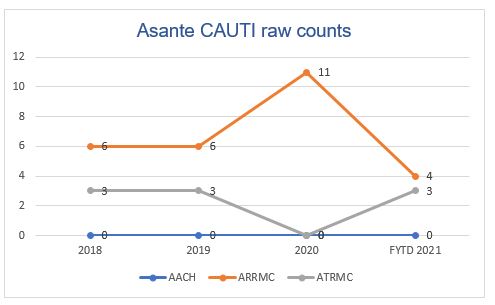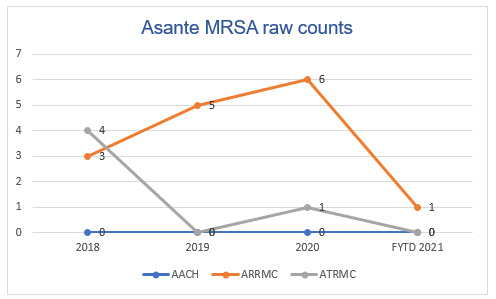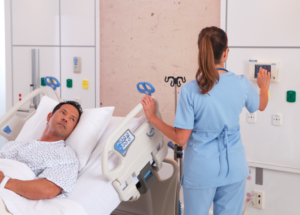Share:
We’re preventing HAIs despite the challenges of the past year
In February we discussed the challenges of 2020 and the impacts they had on our safety and quality scores. While 2021 continues to present us with challenges, our health system is proving that our commitment to quality and safety remains.
Over the first five months of the year our frontline teams have been working hard to keep our patients safe from hospital-acquired infections. And preliminary figures for this year show that our efforts are paying off.
Below are snapshots of our performance and the steps that should be taken to prevent infections.
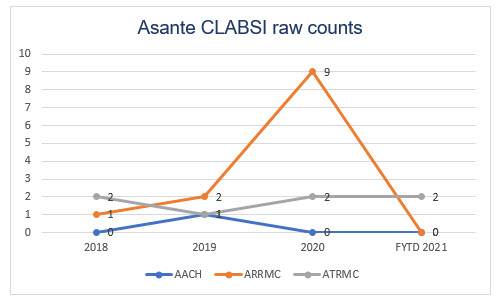 Preventing central-line-associated bloodstream infections
Preventing central-line-associated bloodstream infections
- Indication. Does this patient still need this line? Would a midline or peripheral get the job done?
- Dressing: Is the dressing clean, dry and intact?
- Caps: Do the open ports have caps, even if it’s just a one-time dose?
- Tubing: Is it dated, even if it’s just a one-time dose?
Preventing catheter-associated urinary tract infections
- Indication: Does this patient still need this Foley? Consider alternatives and use a critical eye! Does the patient really have retention?
- Loops and kinks: Is the patient’s tubing getting looped? Who on the care team can support in preventing loops? Consider discussing with PT, OT, Transport or sitters.
- Orders: Double check any urine order with charge RN.
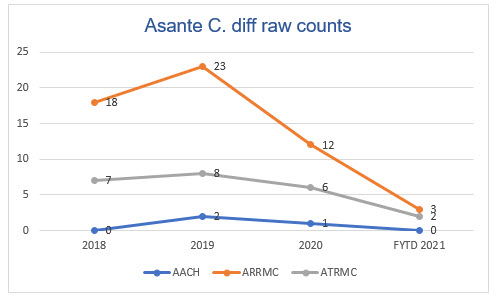
Preventing C. difficile infections
- Perform hand hygiene!
- Double check C. diff specimens with charge RN.
- Clean shared equipment.
Preventing MRSA infections
- Indication: Does the patient still need this line? Would a midline or peripheral get the job done?
- Bathing: CHG bathing for ALL patients with central lines.
- Room safety: Ensure syringes are not left in the room – consider tamper-proof tape.
- Peripheral IV management: Be attentive to PIV sites for signs and symptoms of infiltration and infection. Every portal of entry carries a risk.
First and foremost, we want to keep our patients safe. Every hospital-acquired infection is an opportunity to improve how we deliver care to our patients. Preventing these infections means patients leave our hospital with fewer complications and shorter, less expensive lengths of stay. Asante’s Vision statement is our guiding principle: “To be your trusted health partner for life — every person, every time.”
If you have a question, please contact the author or relevant department directly.

